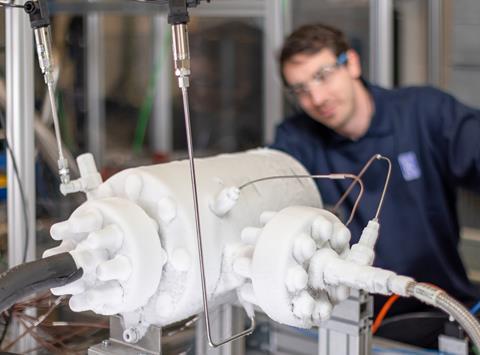Rolls-Royce has embarked on cryogenic tests to pressurise liquid hydrogen and pump it into an engine’s combustion chamber, as part of its effort to develop hydrogen-based propulsion for future airliners.
The manufacturer has started the tests at its Solihull facility in the UK.
Rolls-Royce has already demonstrated that a wholly-hydrogen fuelled combustor, in a Pearl 700 engine, can burn hydrogen at take-off thrust conditions.
But aircraft systems must be capable of taking low-pressure hydrogen – which liquifies at a temperature of minus 253°C – and delivering it, pressurised, to the powerplant.

Rolls-Royce says the latest tests represent the “start of understanding” of this aspect of the overall fuel system.
“Initial tests have focused on chilling the pump and understanding its behaviour at cryogenic conditions,” it adds.
Budget carrier EasyJet is co-operating with the engine manufacturer on its development programme, which eventually aims to perform a full gaseous hydrogen ground test on a Pearl engine, the powerplant used for business jets.
This will precede a similar ground test using liquid hydrogen, potentially leading to a flight-test phase.
“Hydrogen is an opportunity that can be part of aviation’s energy transition,” says Rolls-Royce group director of engineering, technology and safety Simon Burr.
“We are committed to fully understanding its potential.”
Hydrogen power is seen as an avenue to decarbonisation and Airbus, in particular, is intending to develop a hydrogen-fuelled aircraft for entry into service in the mid-2030s.


























